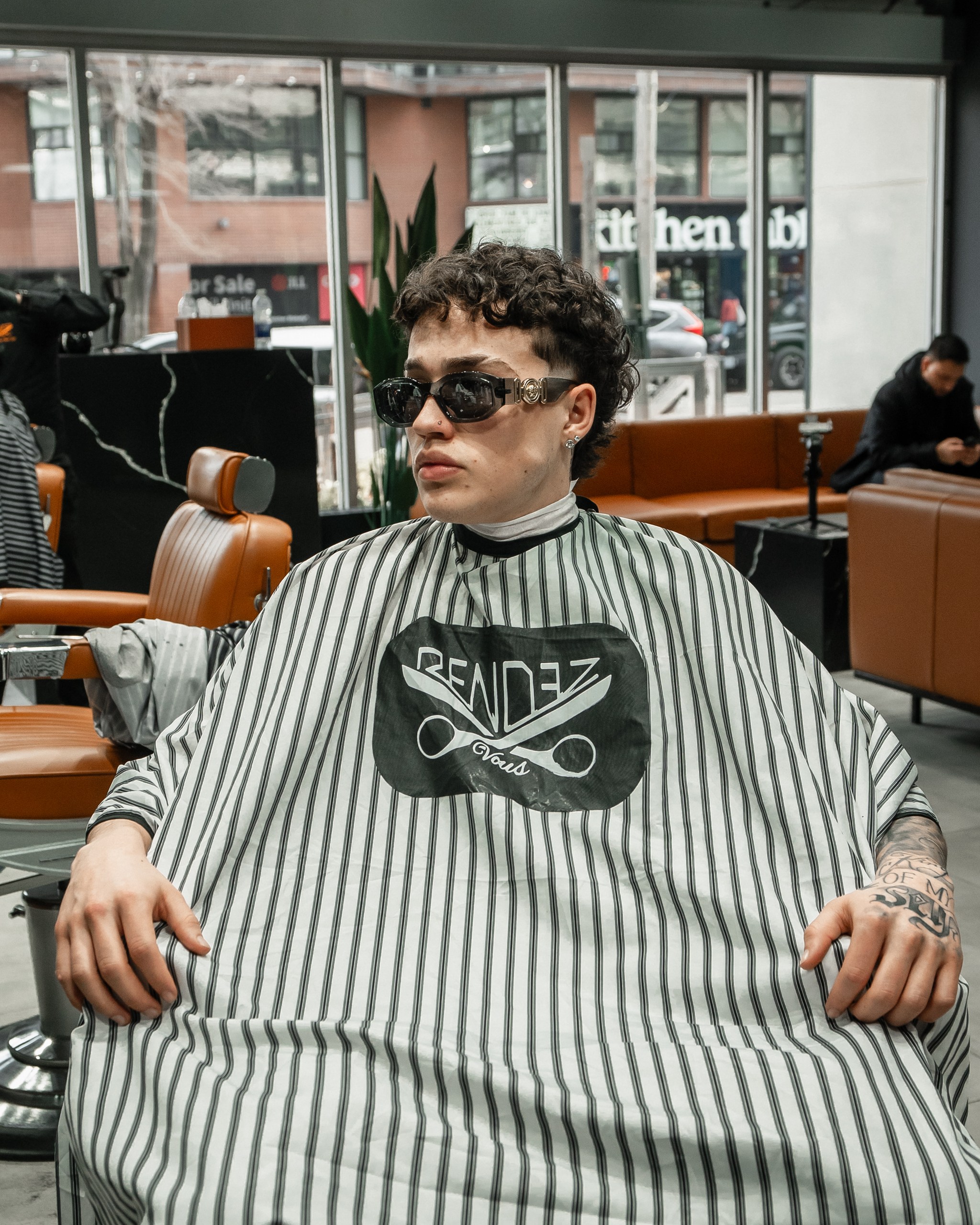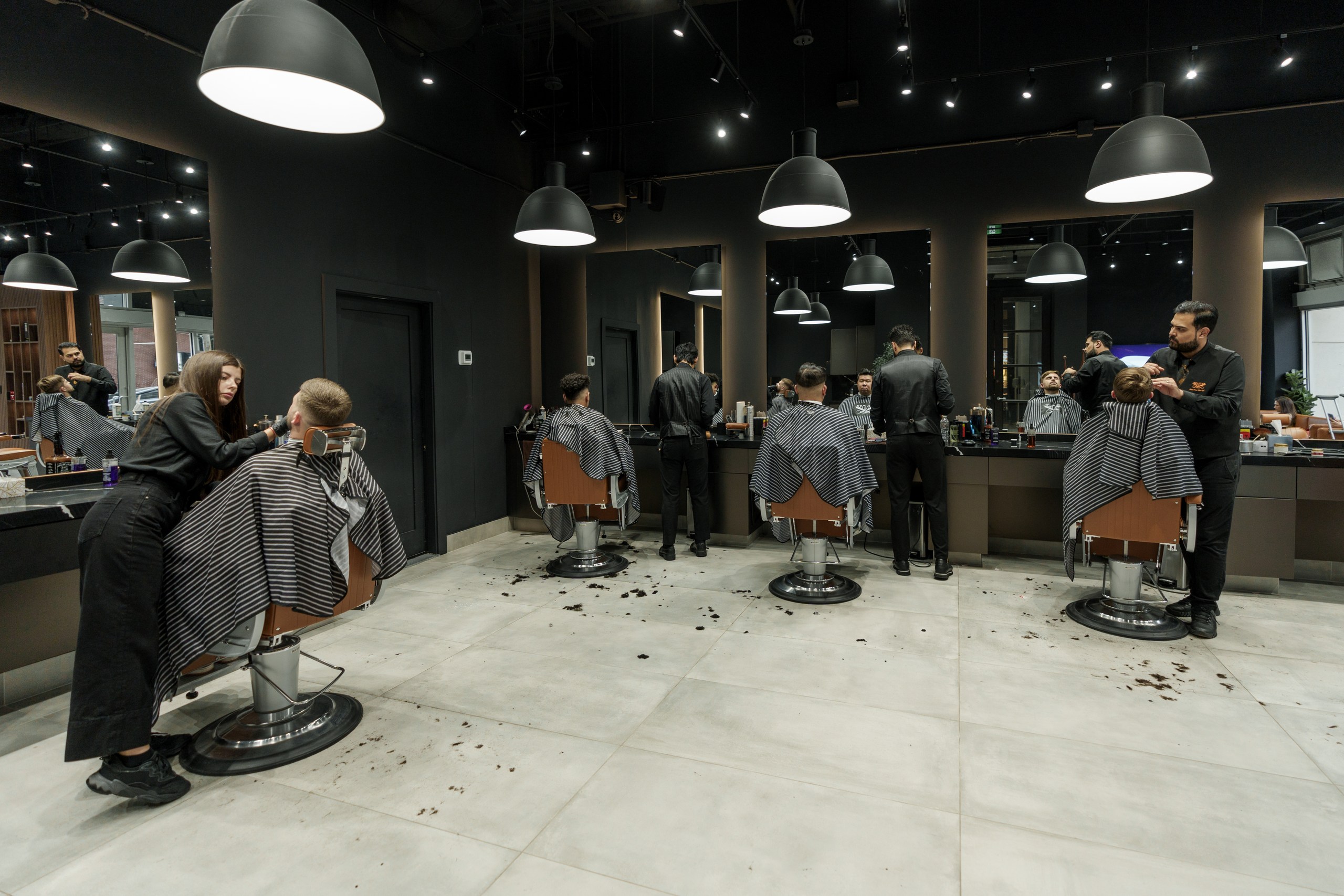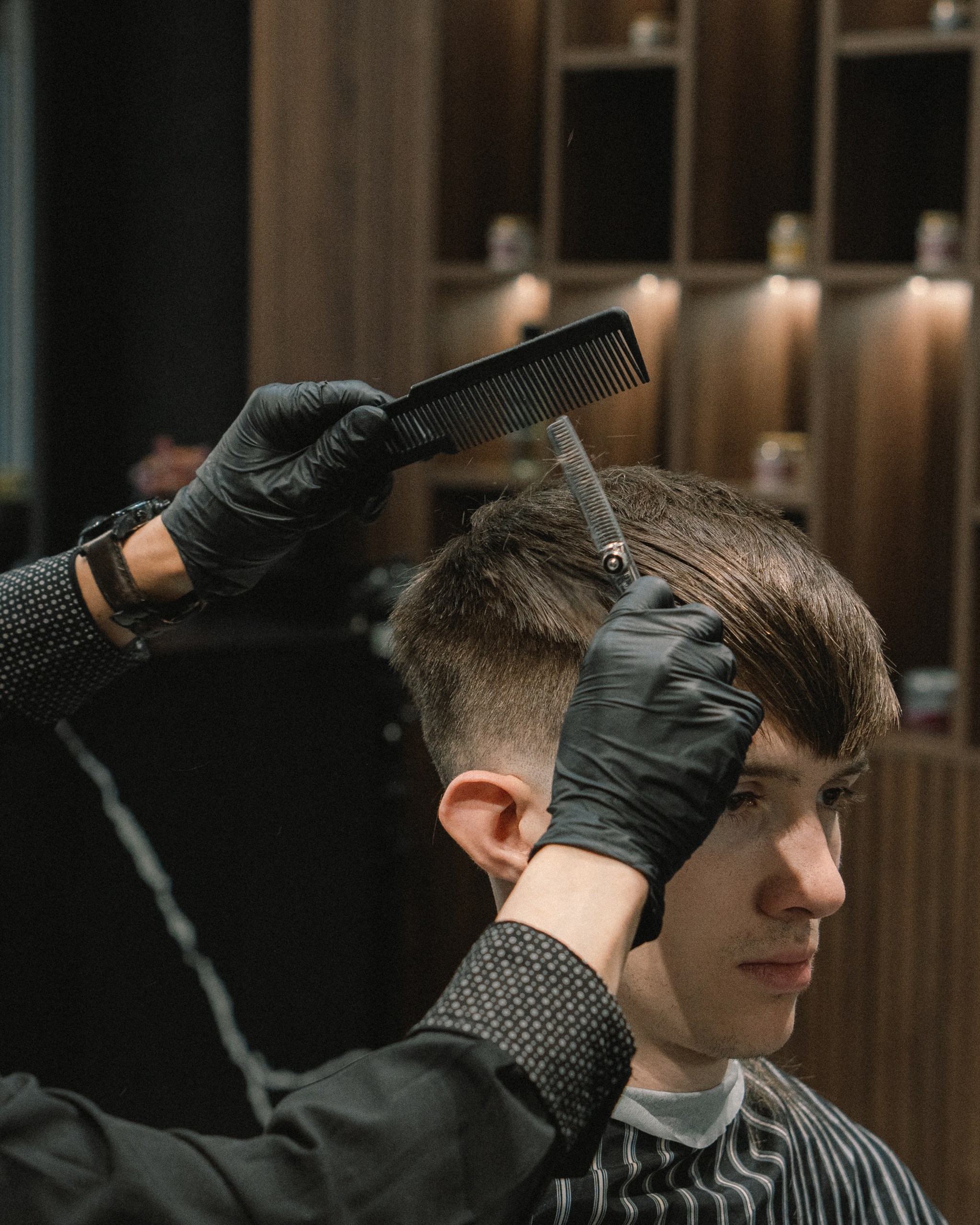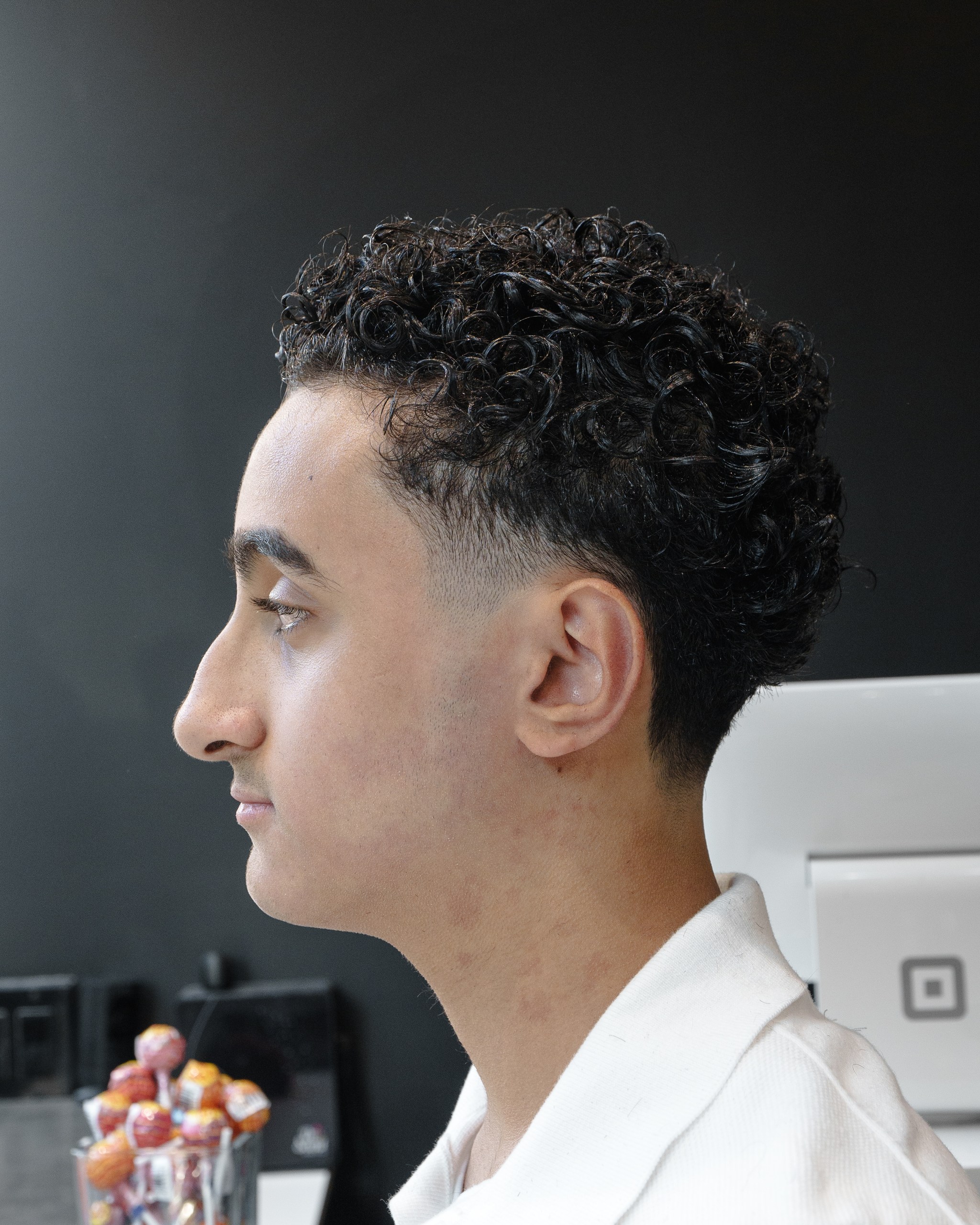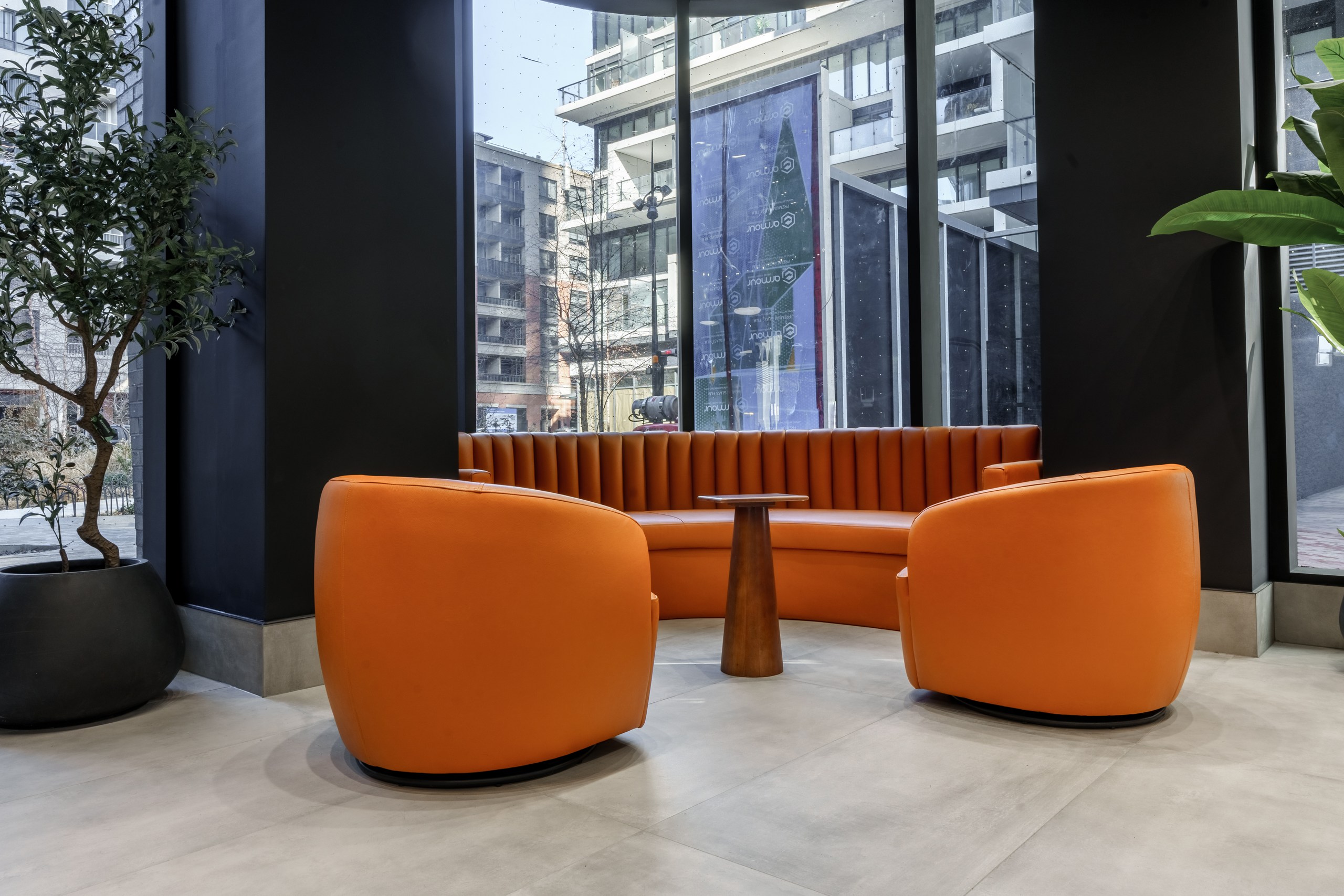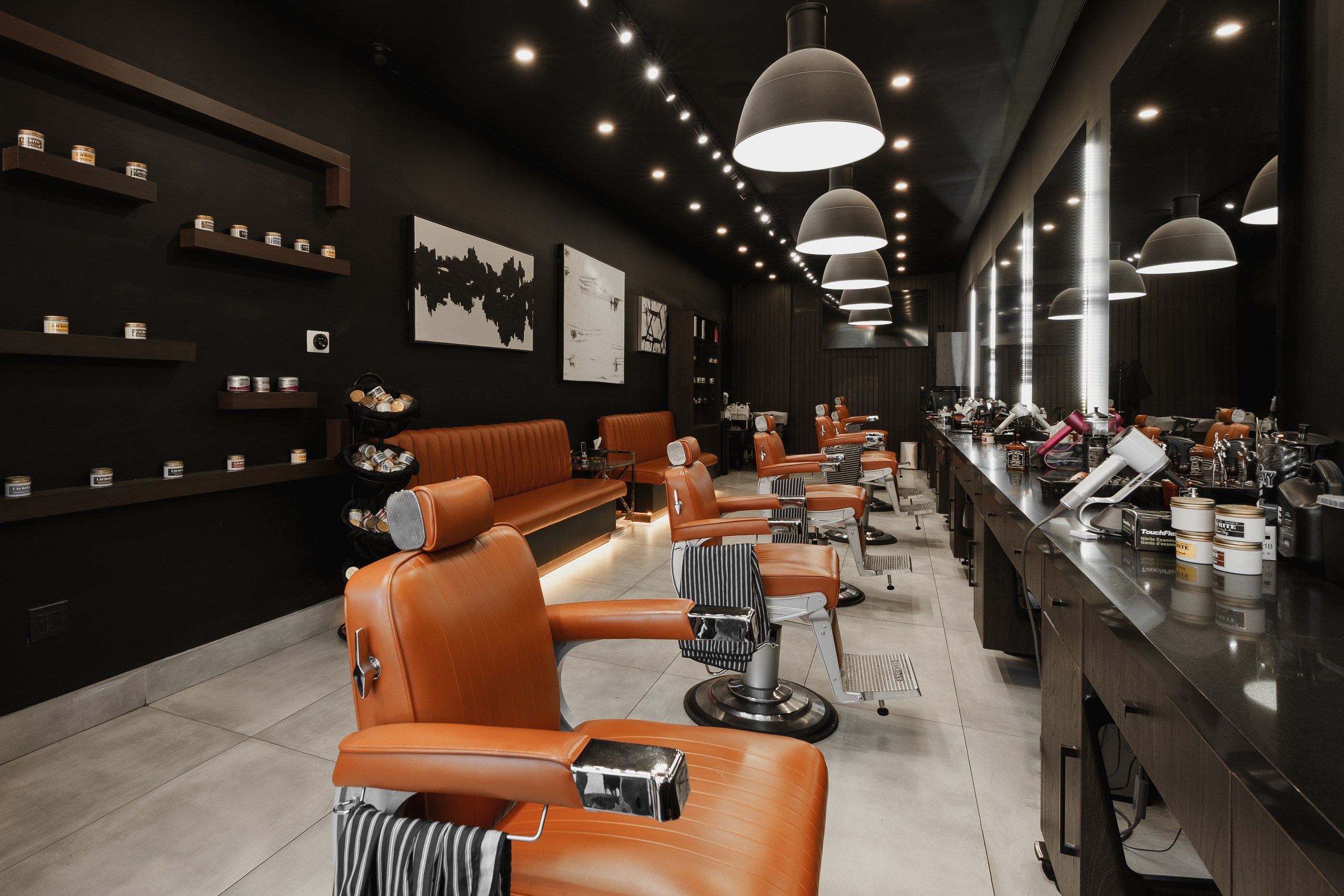When Peaky Blinders first appeared on Netflix, most people expected a period crime drama. What they didn't expect was for a 1920s gangster haircut to become one of the most requested styles in barbershops worldwide. Yet here we are, nearly a decade after the show's debut, with guys still walking into Rendezvous Barbers asking for "the Thomas Shelby."
The appeal makes sense when you understand what this cut actually does. It's aggressive without being cartoonish, historical without looking costume-y, and versatile enough to work in both professional Toronto offices and casual weekend settings. The dramatic contrast between shaved sides and longer top creates a look that's impossible to ignore but somehow remains appropriate across different contexts.
At Rendezvous Barbers, we've refined this cut countless times, adapting the period-piece original into versions that work for modern Toronto life. Understanding the history, variations, and maintenance requirements helps you decide if this bold style fits your situation.
The Historical Context
The Peaky Blinders haircut wasn't invented by a TV costume designer – it's rooted in actual 1920s British working-class style, though heavily dramatized for television. The real Peaky Blinders gang existed in Birmingham during the 1890s-1910s, and their actual haircuts were likely less dramatic than what appears on screen.
The show's hair designer, Loz Schiavo, researched police mugshots and historical photographs from the 1920s to create the signature look. She discovered that many working-class men of that era wore variations of short back and sides with longer tops, often out of practicality rather than fashion. Hair that was short around the ears and neck stayed cleaner in an era before daily showering was common, while length on top provided some styling flexibility.
The military influence is obvious in the clean, precise nature of the cut. Many men of that generation had served in World War I, where military regulations required short hair. The undercut style allowed men to maintain some individuality on top while keeping sides regulation-short.
What the show did was take these historical elements and push them to dramatic extremes. The contrast between shaved sides and longer tops became more pronounced, the lines sharper, and the overall effect more theatrical than what most 1920s working men actually wore.
The Thomas Shelby Signature
Cillian Murphy's Thomas Shelby wears the most recognizable version of the Peaky Blinders cut. This has become the default reference point when guys ask for the style, even if they're actually describing variations worn by other characters.
The technical breakdown involves a number 3 guard (or roughly 3/8 inch) on the sides, creating an undercut that's short but not skin-bald. The back follows the same length, creating a uniform cropped effect from ear level down. The disconnect happens at a relatively high line, leaving substantial length on top.
The top section gets textured to medium length, typically 3-4 inches, with layers cut to create movement rather than weight. This texture is crucial – a blunt, heavy top would look completely different than the intentionally messy, lived-in appearance the style requires.
The styling direction sweeps the fringe to one side, creating an asymmetrical look that breaks up the face's symmetry. This side-swept element prevents the style from looking too severe or military-formal.
The finish uses matte products – typically clay or fiber – that provide hold without shine. This maintains the historical accuracy of the look, as high-gloss pomades would feel wrong for the gritty, working-class character.

Character Variations
Other characters in the show wear related but distinct versions of the basic undercut structure, each with different implications for wearability and maintenance.
Arthur Shelby's variation uses a number 1 guard (1/8 inch) on the sides, creating a more dramatic contrast between sides and top. His styling tends toward slicked-back rather than side-swept, using pomade or gel for a wet-look finish. This version is more aggressive and requires more confidence to pull off in everyday Toronto settings.
John Shelby's approach takes sides to a 0 guard (essentially bald), creating maximum contrast. The top stays shorter than Thomas's version, making it easier to manage daily but requiring more frequent touch-ups to maintain the clean contrast.
Michael Gray's style represents the most refined, business-appropriate version. It features a gentler taper rather than a harsh disconnect, with a side part and subtle fade. This adaptation works better for conservative professional environments while maintaining the general aesthetic.
Understanding these variations helps communicate exactly what you want rather than hoping your barber interprets "the Peaky Blinders cut" the way you're imagining it.
Modern Adaptations for Toronto
The theatrical version seen on screen requires modification for real-world Toronto wear. Most guys need cuts that work in professional settings, survive hat-wearing during Toronto winters, and don't require daily styling maintenance.
Professional modifications might include lowering the disconnect line slightly, using a longer guard on sides (maybe a 4 instead of a 3), or incorporating a subtle fade rather than a hard line. These adjustments maintain the general aesthetic while reducing the dramatic impact that might be too much for conservative workplaces.
Seasonal considerations matter in Toronto's climate. The heavily shaved sides that work fine in controlled indoor temperatures can be uncomfortably cold during winter commutes. Some guys grow out a slightly longer guard during winter months or adjust the height of the undercut to leave more coverage.
Maintenance reality is significant with this cut. The sharp contrast between short sides and longer top only looks good when fresh. As sides grow out, the definition disappears and the cut starts looking sloppy rather than intentionally styled. Most guys need touch-ups every 2-3 weeks to maintain the look.
Lifestyle compatibility should be honestly assessed before committing. This cut demands regular barbershop visits, daily styling, and confidence to wear something noticeably different from standard men's haircuts.
Styling Techniques and Products
Getting this cut is only half the equation – styling it properly makes the difference between looking sharp and looking like you just rolled out of bed.
Product selection depends on which finish you're aiming for. The Thomas Shelby look requires matte products with medium-to-strong hold – clays, fibers, or matte pastes work well. The Arthur Shelby wet-look needs pomades or gels with high shine and strong hold.
Application technique matters more than product choice for most guys. The key is working product through slightly damp (not wet) hair, distributing evenly from roots to ends, then styling while the product is still workable. Too much product creates stiffness; too little provides inadequate hold.
Daily maintenance for the side-swept Thomas style involves applying product, rough-drying with fingers to create texture, then directing the fringe to one side while maintaining some volume on top. The goal is controlled messiness rather than perfect precision.
The slicked-back variations require more product and often benefit from blow-drying before final styling. Creating the wet-look finish requires generous product application and combing through for smooth distribution.
Refresh strategies throughout the day might involve carrying a small amount of product for touch-ups or learning to work with how your hair moves and settles naturally.
Face Shape Considerations
Not every face works equally well with the Peaky Blinders aesthetic, though modifications can adapt it for most guys.
Angular faces with defined jawlines look particularly good with this cut because the shaved sides emphasize bone structure. The style essentially frames your face and draws attention to its shape.
Round faces can work with this cut but benefit from maintaining significant height and volume on top to elongate the face visually. The side-swept styling helps break up roundness more than center-parted or slicked-straight-back variations.
Long, narrow faces should approach this cut cautiously, as the high contrast and vertical emphasis can make faces appear even longer. Modifications might include keeping more length on sides or using styling that adds width rather than height.
Facial hair integration significantly impacts how the cut works with your face. The clean, precise lines of the haircut often pair well with similarly defined beard styles, while the contrast with clean-shaven faces can be dramatic.
Maintenance Requirements
This cut demands more upkeep than most standard men's styles, which should factor into your decision about whether it's worth pursuing.
Barbershop frequency typically ranges from every 2-3 weeks to maintain the sharp contrast that defines the look. As sides grow out, they quickly lose the clean definition that makes the style work.
Home maintenance between appointments might involve careful edge work with personal clippers, though this requires confidence and skill to avoid creating uneven lines or taking too much off.
Daily styling time runs 5-10 minutes for most guys, depending on product choice and desired finish. This is significantly more than wash-and-go styles but less intensive than some longer styles.
Product costs add up over time, particularly if you're using quality styling products daily. Budget for replacing products every 2-3 months depending on usage.
Awkward growth stages happen if you decide to grow the cut out. The transition from dramatic undercut to more conventional length can take months and often looks awkward during the intermediate stages.

When This Cut Works (And When It Doesn't)
Honest assessment of whether this style fits your situation prevents expensive mistakes and awkward growing-out periods.
Ideal candidates have the confidence to wear something noticeably different, the time and money for frequent maintenance, and work/life situations where dramatic haircuts are acceptable or even valued.
Professional concerns should be carefully considered. While this cut can be adapted for conservative environments, the more dramatic versions send signals that might not align with certain corporate cultures.
Lifestyle compatibility requires honest evaluation. If you're not willing to style your hair daily, this cut will look sloppy more often than sharp. If you can't commit to regular barbershop visits, the definition will disappear quickly.
Hair texture limitations affect results significantly. Fine hair might struggle to achieve the textured, substantial look on top, while very coarse or curly hair might require different cutting and styling approaches.
The Barber Communication Guide
Getting exactly what you want requires clear communication rather than assuming "Peaky Blinders cut" means the same thing to everyone.
Bring reference photos showing the specific variation you want, preferably multiple angles showing the sides, back, and top. This eliminates ambiguity about which character's version you're requesting.
Specify guard numbers for the sides rather than leaving it to interpretation. The difference between a 1 and a 3 is dramatic, and you want to be clear about the contrast level you're comfortable with.
Discuss the disconnect line – where the transition from short to long happens. This significantly impacts the overall effect and should be explicitly agreed upon before cutting begins.
Be honest about maintenance commitment with your barber. A good barber will modify the cut toward something more sustainable if they sense you're not prepared for the upkeep the pure version requires.
Conclusion
The Peaky Blinders haircut represents a bold styling choice that works brilliantly for the right person in the right situation. The dramatic contrast, historical roots, and cultural recognition create a look that makes a statement whether you're a fan of the show or just appreciate the aesthetic.
Success with this style requires honest assessment of your face shape, lifestyle, professional requirements, and maintenance commitment. Modified appropriately, it can work in surprisingly diverse contexts. Pursued without understanding the requirements, it becomes an expensive mistake.
Book your appointment today and discover whether this bold historical style translates into something that works for your modern Toronto life. For expert execution of period-inspired cuts adapted for contemporary wear, visit Rendezvous Barbers.
